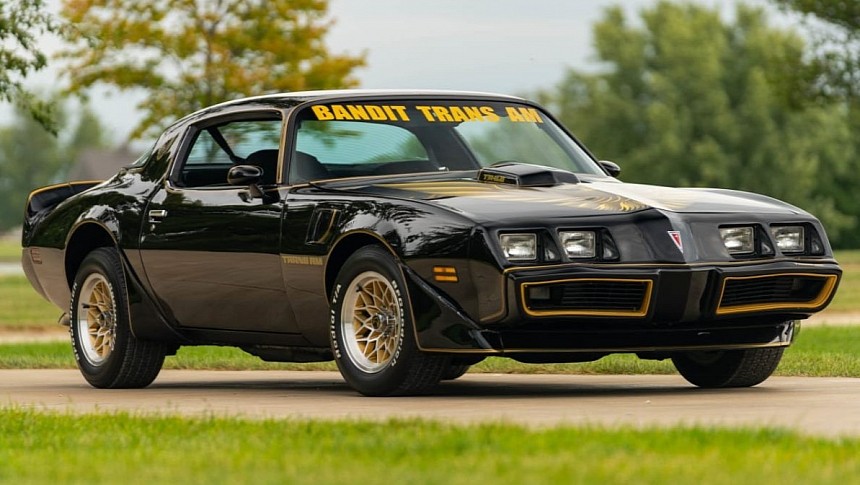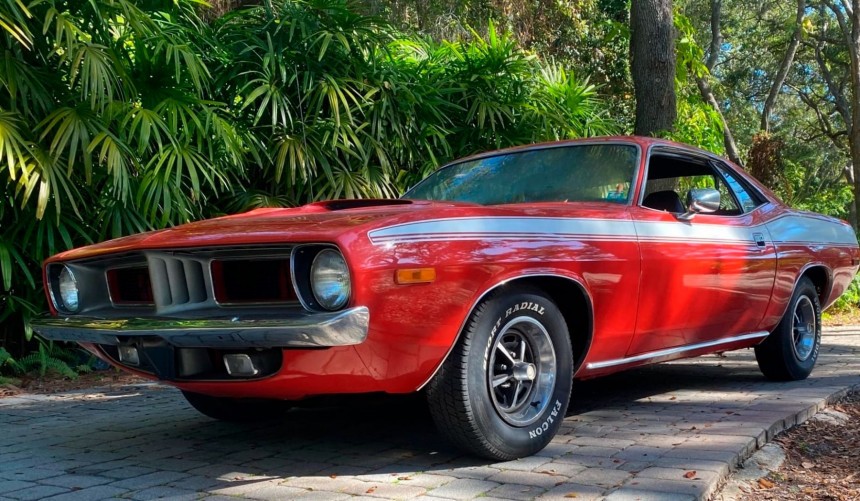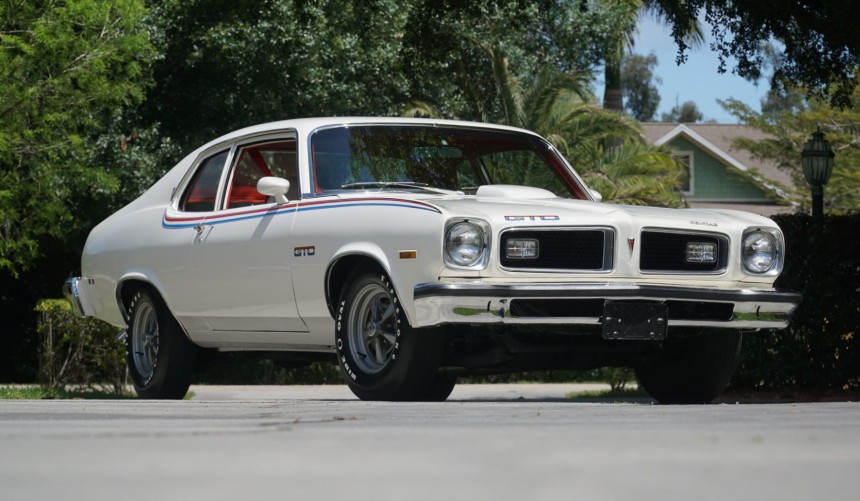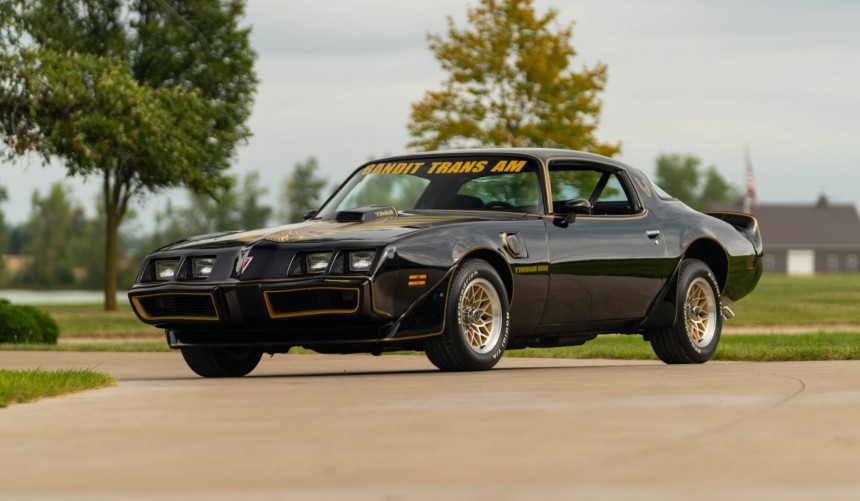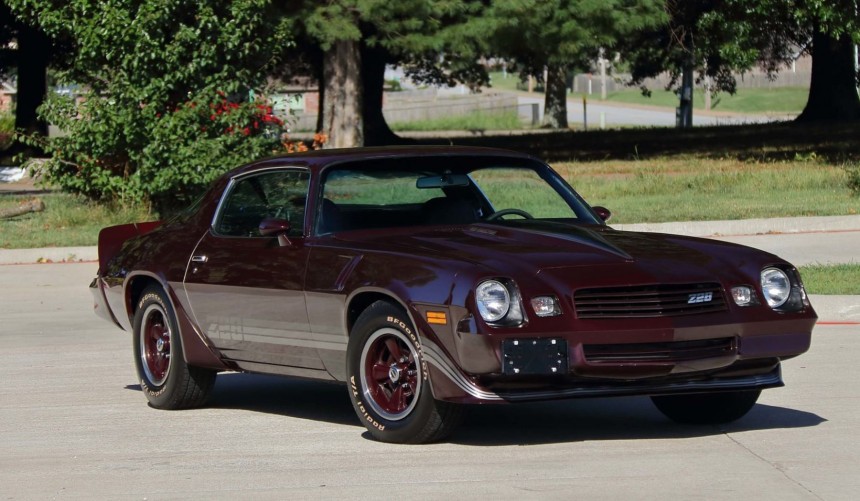The Malaise era spelled the end for true muscle cars like those that hit the streets from 1964 to 1971. Though performance figures and design standards dropped during those dreadful years, some performance-oriented, V8-powered models pushed through.
Coined by journalist Murilee Martin after US President Jimmy Carter's malaise speech, the therm Malaise era is usually used to describe American vehicles built from the 1973 to the 1983 model years.
After thrilling buyers with obscenely powerful rides from 1964 to 1971, American carmakers were forced by various federal regulations and a couple of fuel crises to give up focusing on performance in favor of safety and fuel efficiency.
Though this led to the extinction of the original muscle cars, some models survived for a few years with detuned engines or pushed through the entire period thanks to significant redesigns.
By late-1960s standards, these five Malaise-era models are not worthy of being called muscle cars, but compared to their contemporaries, they were unquestionably more powerful.
Moreover, while most Malaise-era cars are considered the ugliest ever produced throughout the history of the American automotive industry, these models managed to retain or successfully reinterpret the muscle car spirit.
While most muscle car icons were discontinued by the end of the 1973 model year, the third-generation 'Cuda managed to soldier on for another year.
In terms of styling, the 1974 Barracuda retained the iconic design of the 1970-1971 models, plus the minor visual improvements introduced during the 1972 model year.
In the engine department, the legendary 426 HEMI and the potent 440s were gone. Apart from the standard 318-ci (5.2-liter) V8 rated at an appalling 150 hp, the only performance option was a 360-ci (5.9-liter) that could make 245 hp.
That was a long way from the 425 ponies of the HEMI, but still an acceptable figure for the period.
Still, by this time, Americans were feeling the blunt force of the 1973 oil crisis and sky-rocketing insurance premiums, so rather than buying an underpowered 'Cuda, they shifted to fuel-efficient compacts like the new Mustang II.
Consequently, Plymouth only sold 11,734 'Cudas in 1974, and by the time the model year ended, the legendary model was discontinued.
Today, a 1974 Plymouth Baracuda is much more affordable than its high-powered 1970-1971 siblings. According to classic.com, the average value for one currently stands at $44,798.
From the 1964 model credited with kickstarting the muscle car craze to the flashy 1969-1971 Judge, the GTO was one of the most iconic nameplates from the golden era of muscle cars.
But, while the nameplate survived into the Malaise era, Pontiac - much like Ford with the Mustang - was forced to improvise.
Therefore, in 1974, the GTO became an option for the Ventura (a rebadged Chevy Nova), much to the disagreement of the brand's hardcore enthusiasts.
In this new compact guise, the GTO was only available with a 350-ci (5.7-liter) V8 equipped with a Rochester 4MC Quadrajet carburetor.
Mated to a standard three-speed manual and hidden under a functional "shaker" hood, the engine was rated at an acceptable (for the period) 200 hp.
Options included a wide-ratio four-speed manual adorned with a Hurst shifter, a three-speed Turbo Hydra-Matic, power steering, and power front disc brakes.
Though sales improved over 1973, the GTO was discontinued after the 1974 model year ended and would only return three decades later on a rebadged Holden Monaro.
Despite being dubbed the worst GTO ever, the 1974 model retained the muscle car spirit by combining a lighter body with sufficient V8 power and packaging everything into an eye-catching little ride.
With an average value of $34,600, the baby GTO is a cool and affordable classic muscle car that can be enjoyed with its stock 360 or beefed up exponentially with a bigger V8.
The second-generation Firebird Trans Am was another muscle car from the golden age that continued production during the early years of the Malaise era. However, unlike the GTO, it was constantly improved and thrived throughout the entire period.
In 1979, the entire Firebird lineup received a significant redesign that aimed to modernize its appearance.
Its front and rear ends were completely reshaped, giving birth to the most iconic looks of the Malaise era and one of the meanest-looking muscle cars ever produced.
Under the hood, the high-performance Trans Am trim came with a standard Oldsmobile-sourced 403-ci (6.6-liter) good for 185 hp that could only be had with a three-speed auto.
Those who wanted a more fuel-efficient V8 (and a manual) could get the 150-hp Pontiac 301 (4.9-liter), while power-thirsty enthusiasts could go for the 400-ci (6.6-liter) conservatively rated at 220 hp - albeit this engine leftover from the 1978 production run was in short supply.
Equipped with the WS6 Special Performance Package that stiffened the suspension, the 1979 Trans Am was one of the best-handling muscle cars of the 20th century.
These days, its average value stands at $34,600 (according to classic.com), which makes it an affordable muscle car icon that can be easily transformed into a tire shredder thanks to the availability of a wide range of aftermarket upgrades.
Like its Pontiac sibling, the second generation Camaro also soldiered on past 1973, surviving on the market until 1981.
However, unlike the Firebird, the Chevy pony car continued using the same early-1970s look with far more subtle improvements.
The muscular Z/28 trim also survived, but like all other performance-oriented models, output ratings dropped significantly.
As standard, the last hoorah for the second generation Z/28 was powered by a 305-ci (5.0-liter) rated at 165 hp, with the sole option being a 350-ci (5.7-liter) that made 190 hp.
However, in 1981, the 350 received an engine management system to tame emissions but also affected power, dropping to 175 hp.
Today, the 1980-1981 Z/28 has an average value of around $20,000, making it one of the cheapest classic muscle cars available.
The stock ratings don't make it a thoroughbred muscle car, but this beautiful survivor can easily be tuned to produce more ponies. Moreover, it has a large engine bay that can accommodate another, more potent V8 if you really want some muscle-car-worthy power.
The trend-setting pony car turned muscle car icon survived through the Malaise era but underwent two drastic redesigns.
Launched in 1973, the second-generation, Ford Pinto-based 'Stang was an ugly and underpowered subcompact that proved highly successful despite losing all its muscles.
In 1979, the Mustang was redesigned once again, moving to Ford's larger Fox platform. But, despite the larger platform, output remained anemic for the sake of fuel economy.
Three years later, the Fox body 'Stang became slightly more exciting thanks to the rebirth of the GT trim. Unlike the Cobra package it replaced, the new GT was not just an appearance-boosting trim but also brought a performance-oriented engine.
Marketed as a 5.0-liter, the "new" powerplant was actually a Winsdor 302 (4.9-liter) with several improvements that amounted to 157 hp - nearly twice as much as the 'Stang's standard inline-six.
The first GT 'of the Fox body 'Stang family currently has an average value of around $15,000, making it the cheapest entry on our list.
Though it's not the prettiest Mustang ever built, the Fox body has a cult following today and, thus, a wide range of aftermarket upgrades that can be used to exponentially increase performance.
After thrilling buyers with obscenely powerful rides from 1964 to 1971, American carmakers were forced by various federal regulations and a couple of fuel crises to give up focusing on performance in favor of safety and fuel efficiency.
Though this led to the extinction of the original muscle cars, some models survived for a few years with detuned engines or pushed through the entire period thanks to significant redesigns.
By late-1960s standards, these five Malaise-era models are not worthy of being called muscle cars, but compared to their contemporaries, they were unquestionably more powerful.
Moreover, while most Malaise-era cars are considered the ugliest ever produced throughout the history of the American automotive industry, these models managed to retain or successfully reinterpret the muscle car spirit.
1974 Plymouth Barracuda
In terms of styling, the 1974 Barracuda retained the iconic design of the 1970-1971 models, plus the minor visual improvements introduced during the 1972 model year.
In the engine department, the legendary 426 HEMI and the potent 440s were gone. Apart from the standard 318-ci (5.2-liter) V8 rated at an appalling 150 hp, the only performance option was a 360-ci (5.9-liter) that could make 245 hp.
That was a long way from the 425 ponies of the HEMI, but still an acceptable figure for the period.
Still, by this time, Americans were feeling the blunt force of the 1973 oil crisis and sky-rocketing insurance premiums, so rather than buying an underpowered 'Cuda, they shifted to fuel-efficient compacts like the new Mustang II.
Consequently, Plymouth only sold 11,734 'Cudas in 1974, and by the time the model year ended, the legendary model was discontinued.
Today, a 1974 Plymouth Baracuda is much more affordable than its high-powered 1970-1971 siblings. According to classic.com, the average value for one currently stands at $44,798.
1974 Pontiac GTO
But, while the nameplate survived into the Malaise era, Pontiac - much like Ford with the Mustang - was forced to improvise.
Therefore, in 1974, the GTO became an option for the Ventura (a rebadged Chevy Nova), much to the disagreement of the brand's hardcore enthusiasts.
In this new compact guise, the GTO was only available with a 350-ci (5.7-liter) V8 equipped with a Rochester 4MC Quadrajet carburetor.
Mated to a standard three-speed manual and hidden under a functional "shaker" hood, the engine was rated at an acceptable (for the period) 200 hp.
Options included a wide-ratio four-speed manual adorned with a Hurst shifter, a three-speed Turbo Hydra-Matic, power steering, and power front disc brakes.
Though sales improved over 1973, the GTO was discontinued after the 1974 model year ended and would only return three decades later on a rebadged Holden Monaro.
Despite being dubbed the worst GTO ever, the 1974 model retained the muscle car spirit by combining a lighter body with sufficient V8 power and packaging everything into an eye-catching little ride.
With an average value of $34,600, the baby GTO is a cool and affordable classic muscle car that can be enjoyed with its stock 360 or beefed up exponentially with a bigger V8.
1979 Pontiac Firebird Trans Am
In 1979, the entire Firebird lineup received a significant redesign that aimed to modernize its appearance.
Its front and rear ends were completely reshaped, giving birth to the most iconic looks of the Malaise era and one of the meanest-looking muscle cars ever produced.
Under the hood, the high-performance Trans Am trim came with a standard Oldsmobile-sourced 403-ci (6.6-liter) good for 185 hp that could only be had with a three-speed auto.
Those who wanted a more fuel-efficient V8 (and a manual) could get the 150-hp Pontiac 301 (4.9-liter), while power-thirsty enthusiasts could go for the 400-ci (6.6-liter) conservatively rated at 220 hp - albeit this engine leftover from the 1978 production run was in short supply.
Equipped with the WS6 Special Performance Package that stiffened the suspension, the 1979 Trans Am was one of the best-handling muscle cars of the 20th century.
These days, its average value stands at $34,600 (according to classic.com), which makes it an affordable muscle car icon that can be easily transformed into a tire shredder thanks to the availability of a wide range of aftermarket upgrades.
1980-1981 Chevrolet Camaro Z/28
However, unlike the Firebird, the Chevy pony car continued using the same early-1970s look with far more subtle improvements.
The muscular Z/28 trim also survived, but like all other performance-oriented models, output ratings dropped significantly.
As standard, the last hoorah for the second generation Z/28 was powered by a 305-ci (5.0-liter) rated at 165 hp, with the sole option being a 350-ci (5.7-liter) that made 190 hp.
However, in 1981, the 350 received an engine management system to tame emissions but also affected power, dropping to 175 hp.
Today, the 1980-1981 Z/28 has an average value of around $20,000, making it one of the cheapest classic muscle cars available.
The stock ratings don't make it a thoroughbred muscle car, but this beautiful survivor can easily be tuned to produce more ponies. Moreover, it has a large engine bay that can accommodate another, more potent V8 if you really want some muscle-car-worthy power.
1982 Ford Mustang GT
Launched in 1973, the second-generation, Ford Pinto-based 'Stang was an ugly and underpowered subcompact that proved highly successful despite losing all its muscles.
In 1979, the Mustang was redesigned once again, moving to Ford's larger Fox platform. But, despite the larger platform, output remained anemic for the sake of fuel economy.
Three years later, the Fox body 'Stang became slightly more exciting thanks to the rebirth of the GT trim. Unlike the Cobra package it replaced, the new GT was not just an appearance-boosting trim but also brought a performance-oriented engine.
Marketed as a 5.0-liter, the "new" powerplant was actually a Winsdor 302 (4.9-liter) with several improvements that amounted to 157 hp - nearly twice as much as the 'Stang's standard inline-six.
The first GT 'of the Fox body 'Stang family currently has an average value of around $15,000, making it the cheapest entry on our list.
Though it's not the prettiest Mustang ever built, the Fox body has a cult following today and, thus, a wide range of aftermarket upgrades that can be used to exponentially increase performance.
